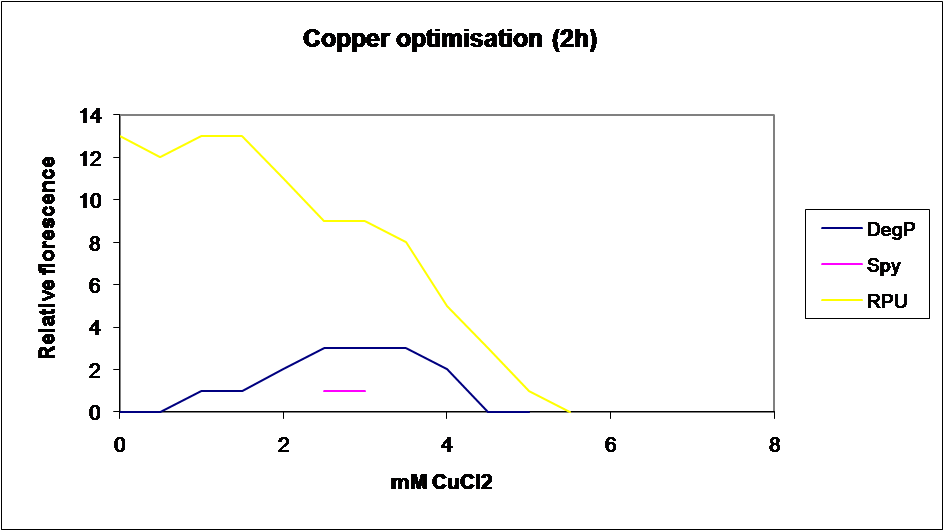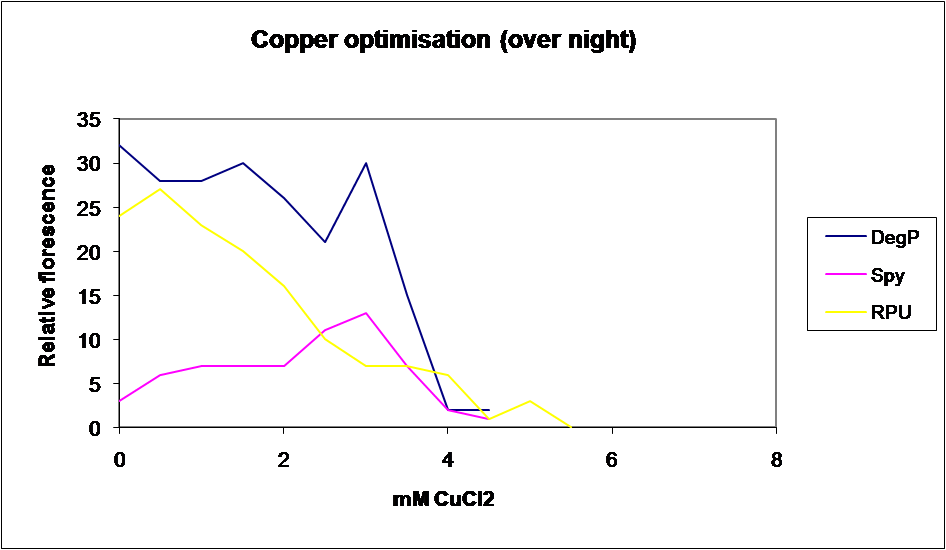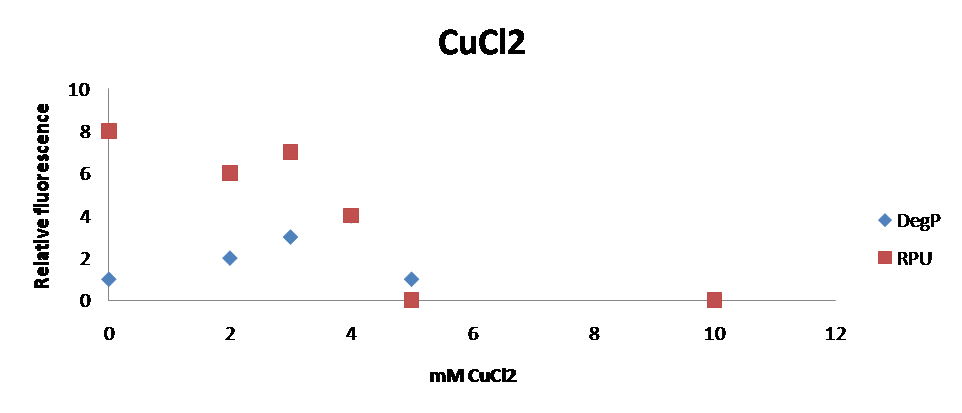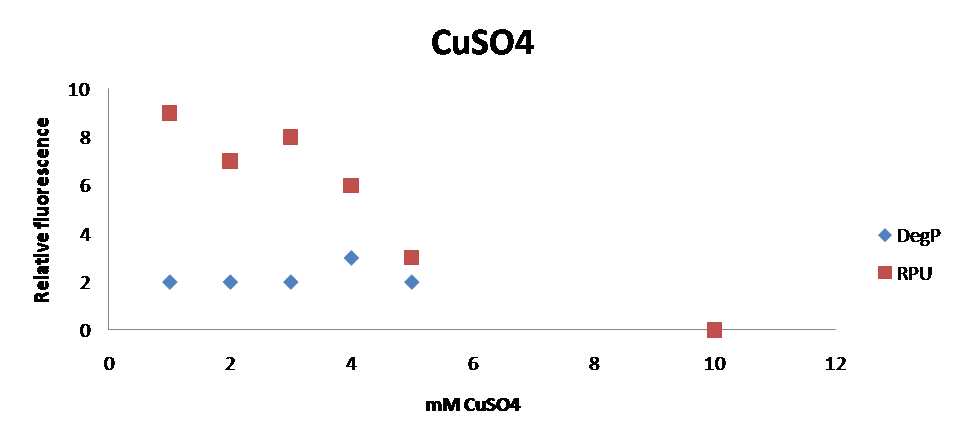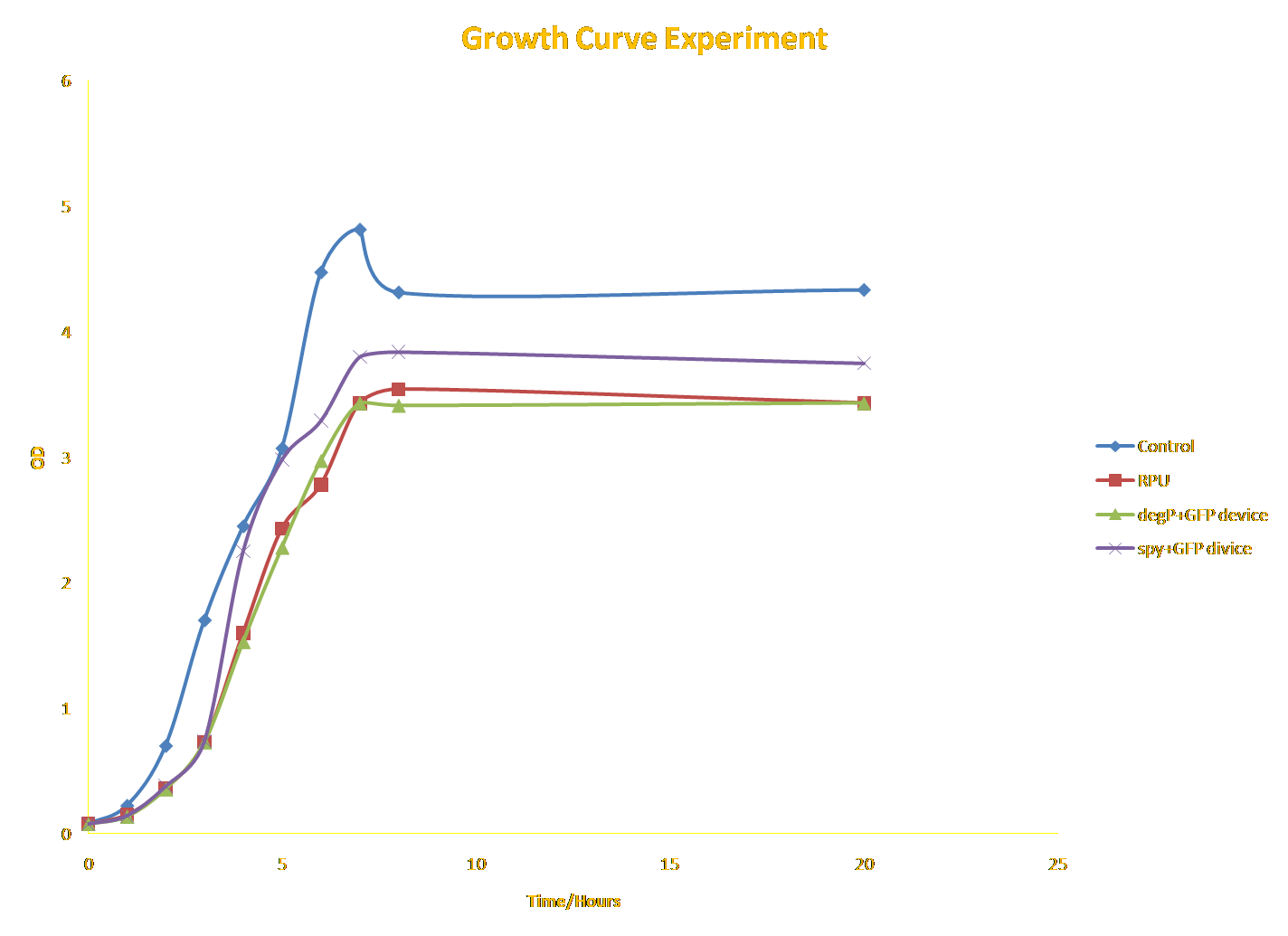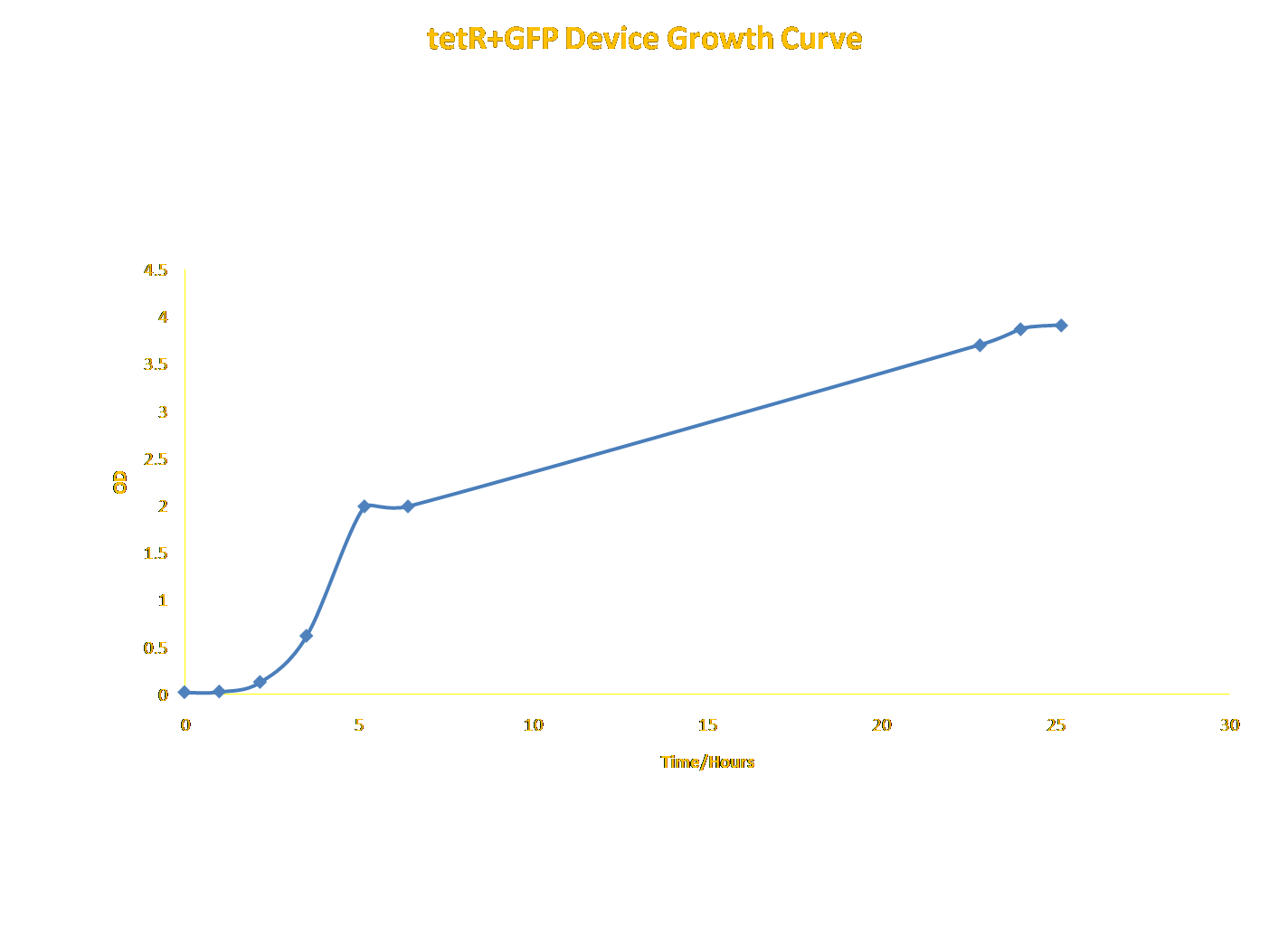Team:UCL London/From the lab/Results
From 2009.igem.org
(→Experiment II Conclusion) |
(→Copper Experiments) |
||
| Line 5: | Line 5: | ||
=Copper Experiments= | =Copper Experiments= | ||
| - | [[Team:UCL_London/From_the_lab/Expts# | + | [[https://2009.igem.org/Team:UCL_London/From_the_lab/Expts#Copper_optimisation_Experiment|'''Link back to Experiment Page''']] |
'''Note on Copper''' | '''Note on Copper''' | ||
Revision as of 00:14, 22 October 2009
Contents |
Copper Experiments
[Link back to Experiment Page]
Note on Copper
Copper is an essential trace metal for all living organisms. Nevertheless, free intracellular copper is very toxic and has a negative impact on most cells even at very low concentrations. Even though the system for the control of copper levels not is fully understood in E.coli two systems, CueR and CusR, have been identified as regulatory systems for copper homeostasis. According to some researchers, increased levels of extra cellular copper may have the effect of denaturing some membrane proteins. (Yamamoto and Ishihama 2005) This has however not yet been proved so there is still a risk that the CpxAR system could be activated by some additional copper mediated mechanism independent of the presence of misfolded proteins in the periplasm.
Graphs
Growth Cruves Experiments I
Graphs
Experiment I Conclusion
Fig.2a illustrated the growth curves of control (E.coli without any modified plasmids), RPU device ([http://partsregistry.org/Part:BBa_I20260 BBa_I20260]), degP+GFP device ([http://partsregistry.org/Part:BBa_K239015 BBa_K239015]), and spy device ([http://partsregistry.org/Part:BBa_K239009 BBa_K239009]). Fig.2b showed the growth curve of tetR+GFP device ([http://partsregistry.org/Part:BBa_K239012 BBa_K239012])
According to the data from Fig.2a, although taking in modified plasmid clearly affected the population of the bacteria, E.coli W3110 reached stationary phase after approximate 8 hours incubation. After about 2 hours of incubation, bacteria turned to start entering exponential phase (log phase). Consequently, some experiments could start at this point to investigate the cell respond at early log phase. Furthermore, the OD of cell cultures reached around 2.0 to 3.0 after 5 hours. This would give a relatively high OD for more clear and strong fluorescent measurements.
Growth Cruves Experiments II
Graphs
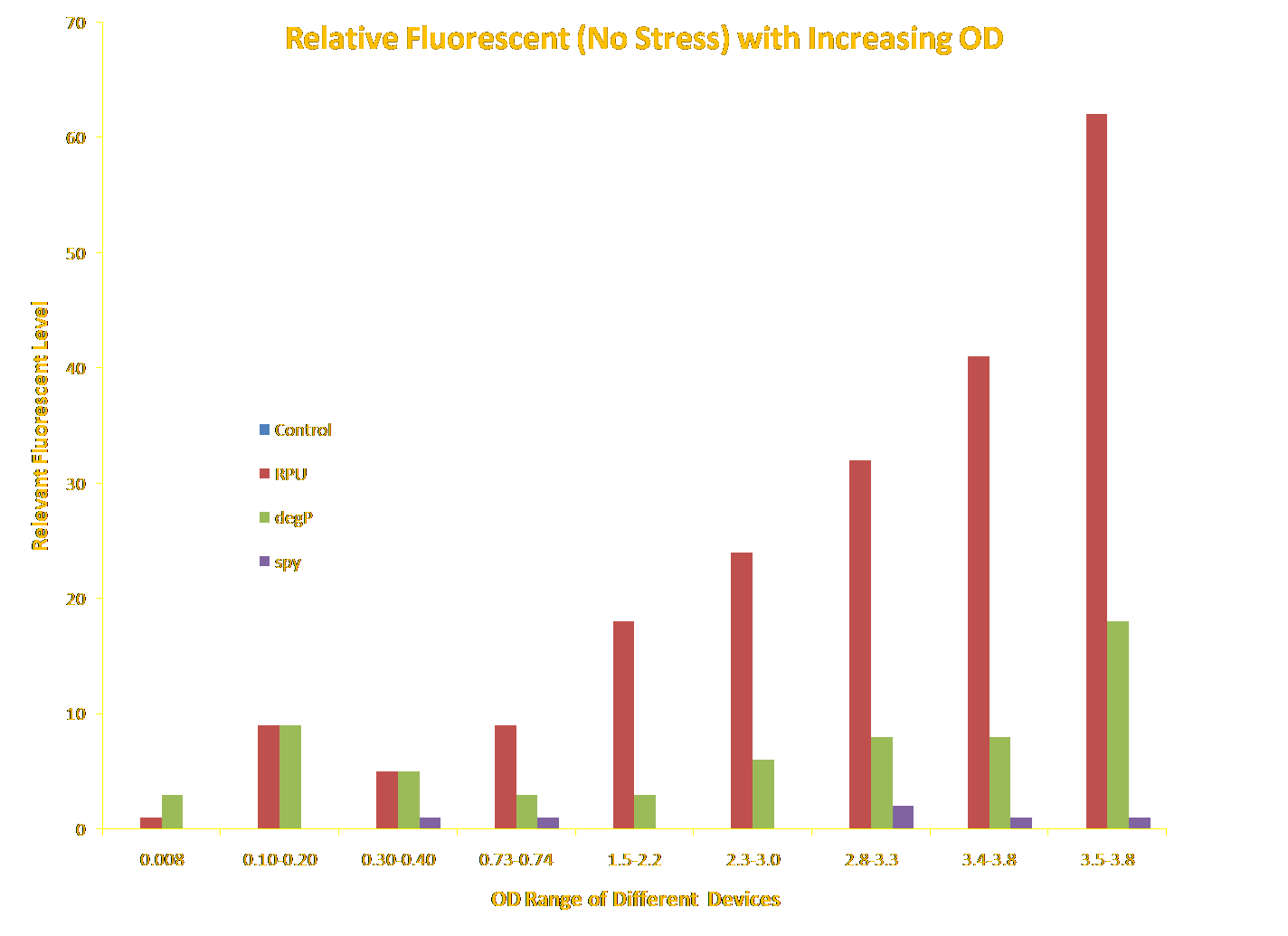 Fig.3a Relative Fluorescent (No stress) with Increasing OD
Fig.3a Relative Fluorescent (No stress) with Increasing OD
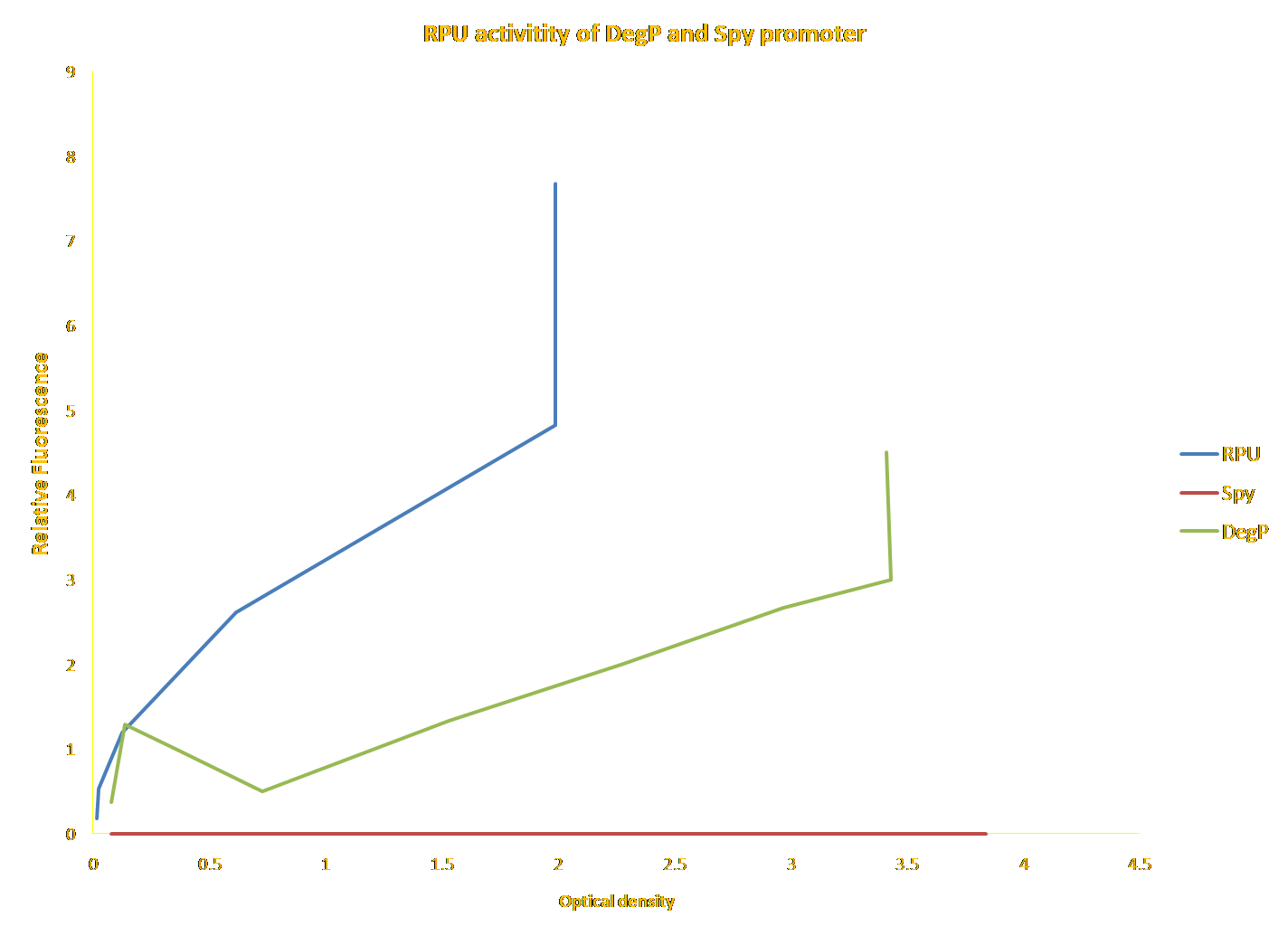 Fig.3b RPU activitity of DegP and Spy promoter
Fig.3b RPU activitity of DegP and Spy promoter
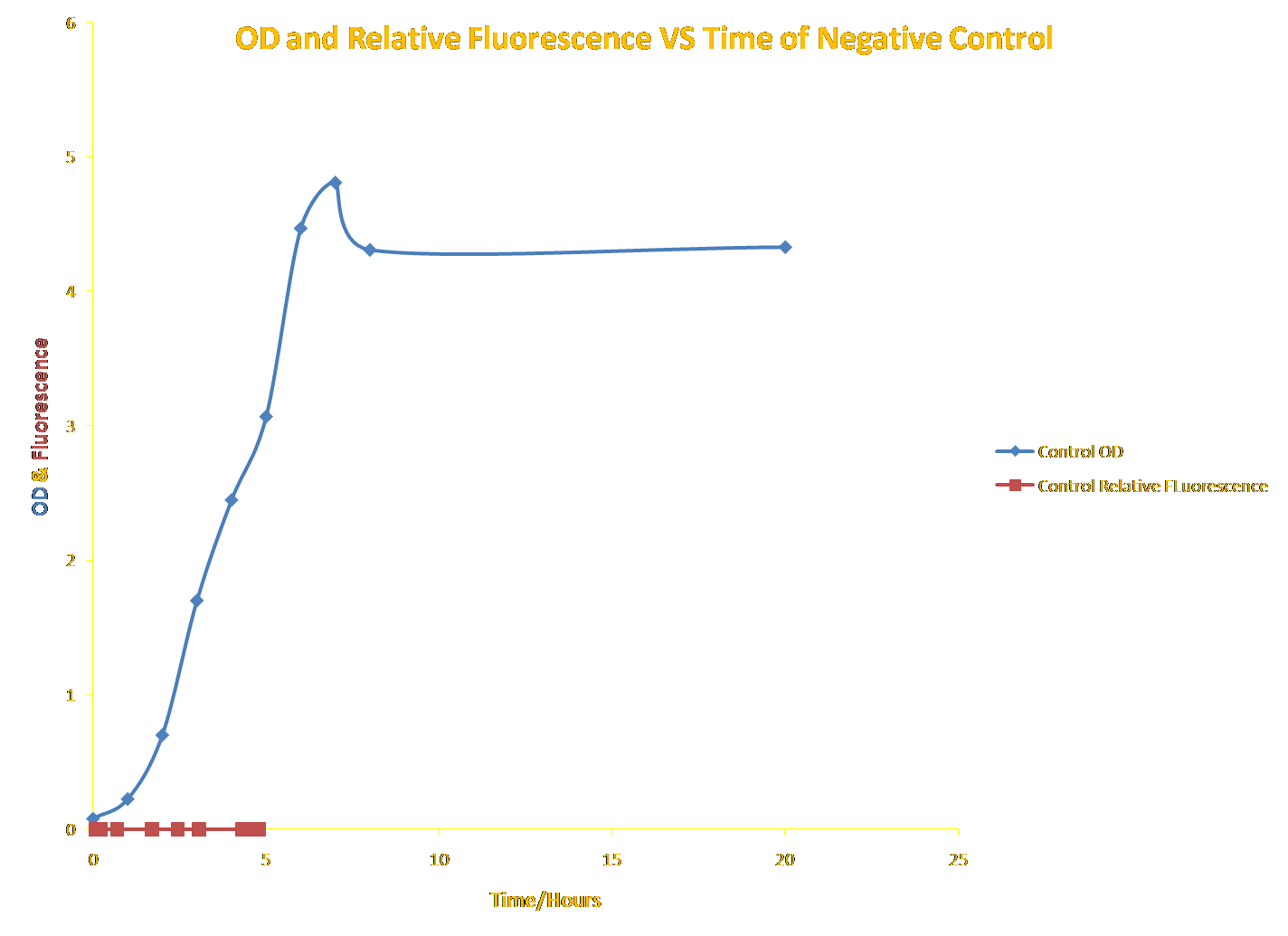
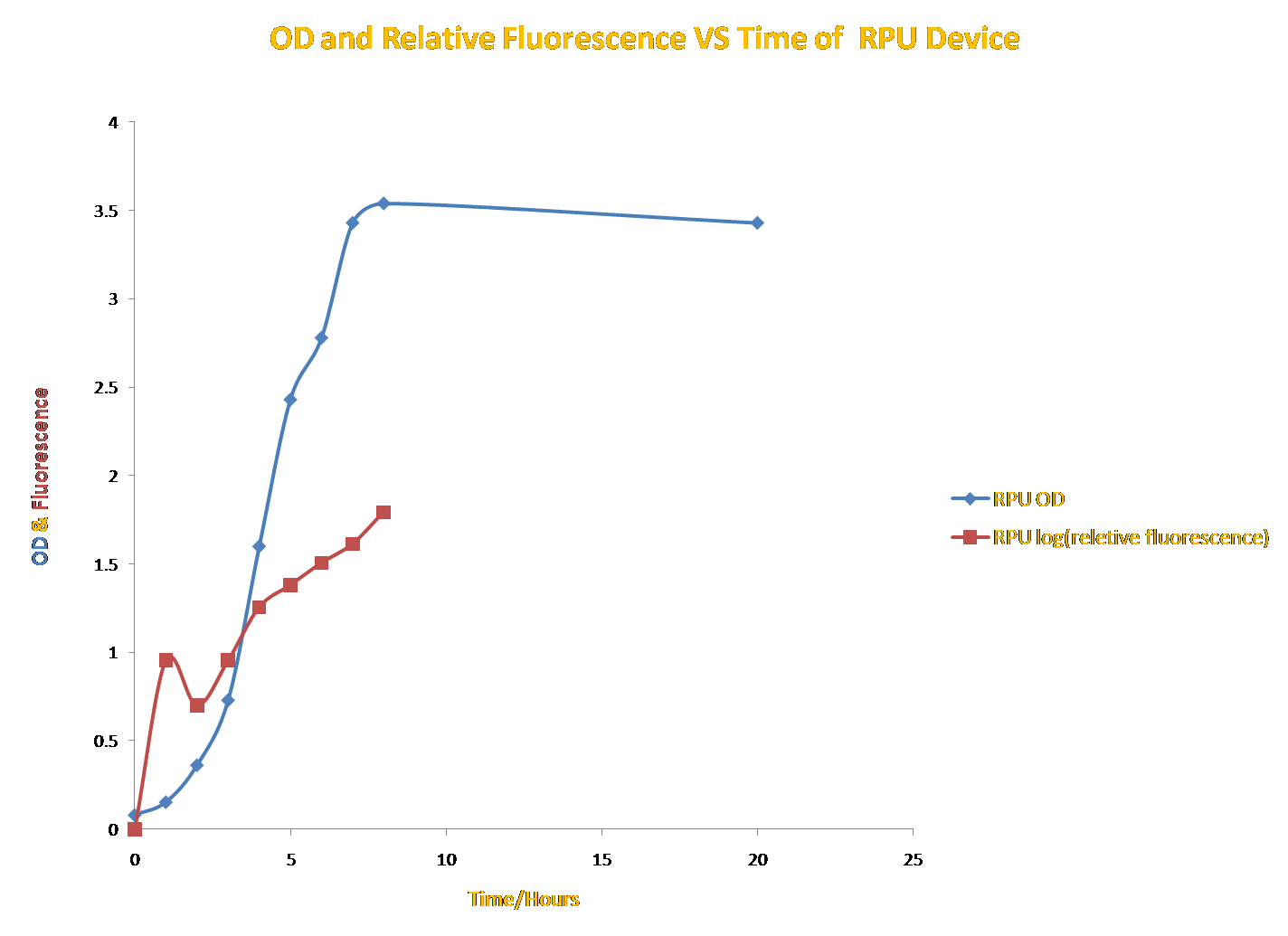
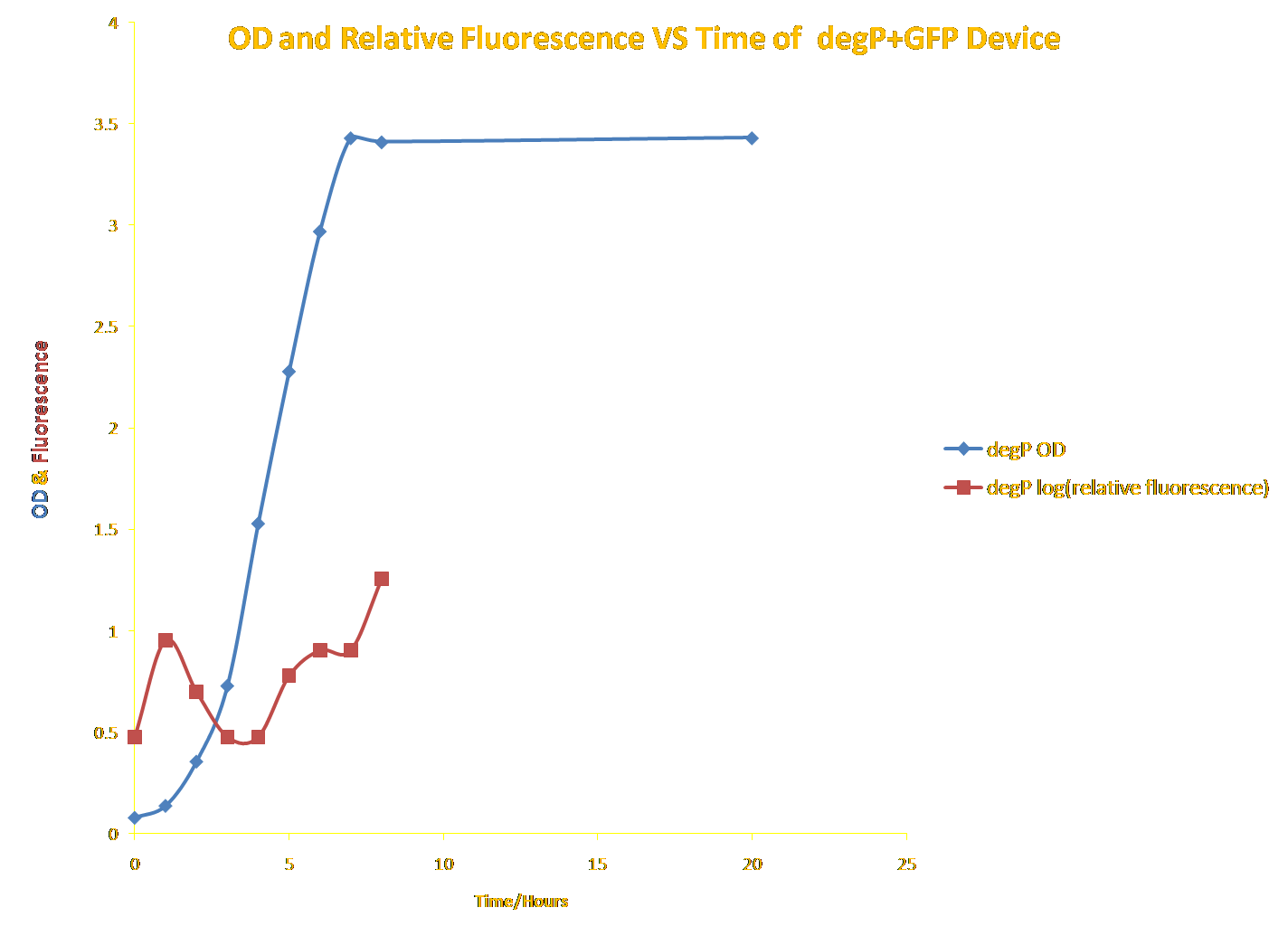
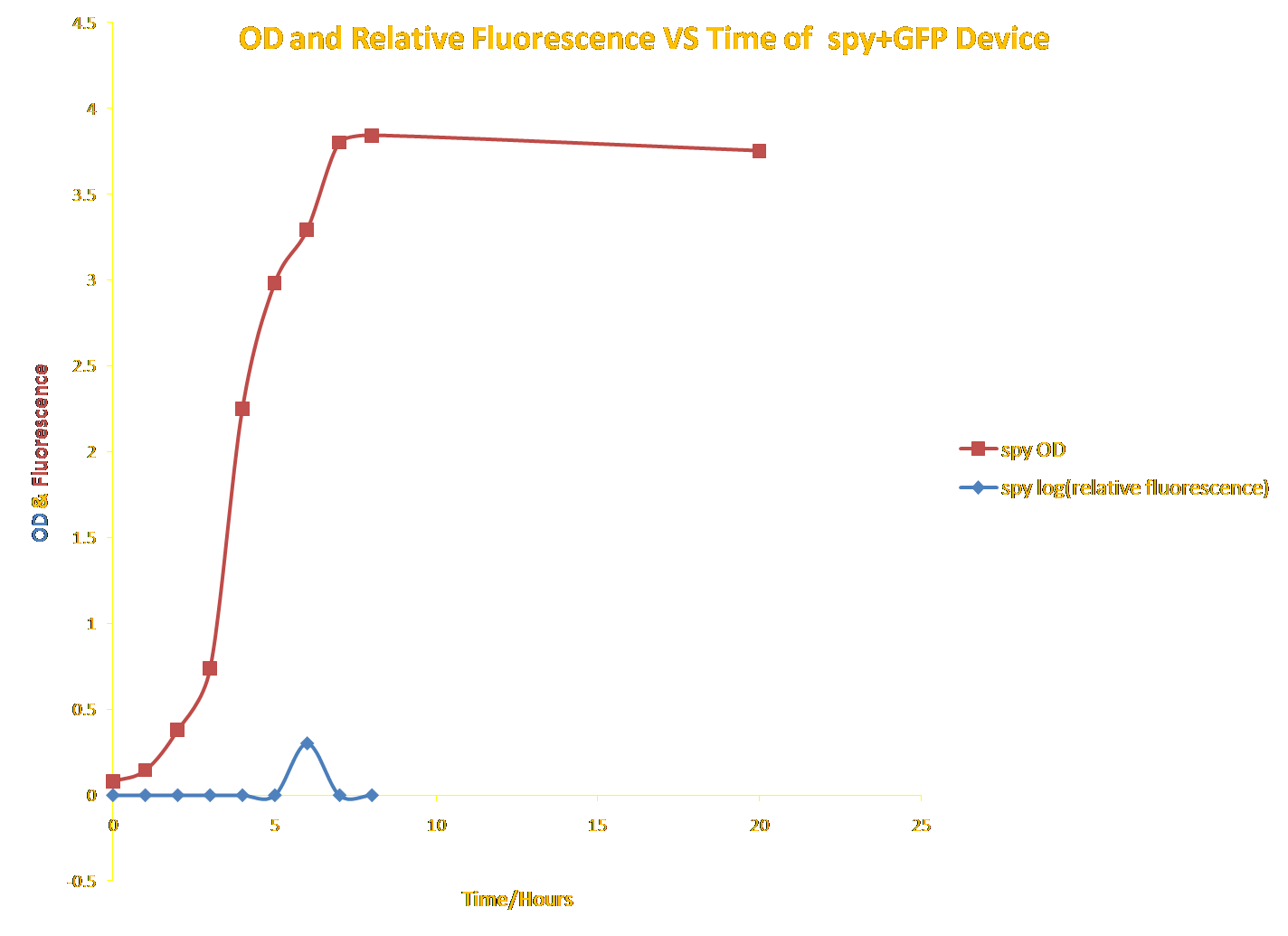 Fig.3c From left to right, the graph illustrated the OD and Relative Fluorescence VS Time of negative control (E.coli without any modified plasmids), RPU device ([http://partsregistry.org/Part:BBa_I20260 BBa_I20260]), degP+GFP device ([http://partsregistry.org/Part:BBa_K239015 BBa_239015]), and spy device ([http://partsregistry.org/Part:BBa_K239009 BBa_K239009]). Please click on the graph to view larger image.
Fig.3c From left to right, the graph illustrated the OD and Relative Fluorescence VS Time of negative control (E.coli without any modified plasmids), RPU device ([http://partsregistry.org/Part:BBa_I20260 BBa_I20260]), degP+GFP device ([http://partsregistry.org/Part:BBa_K239015 BBa_239015]), and spy device ([http://partsregistry.org/Part:BBa_K239009 BBa_K239009]). Please click on the graph to view larger image.
Experiment II Conclusion
Both Fig.3a and Fig.3b indicated that promoter spy is completely silent in all the phases, from lag to stationary phase. More information on [http://partsregistry.org/Part:BBa_K239001 BBa_K239001]. According to Fig.3a and Fig.3c degP+GFP graph, degP promoter showed weak fluorescence when it reached stationary phase. Additionally, from other testing experiences of our project, the overnight deP+GFP cell cultures gave strong green fluorescence. The possible reasons are clearly explained under the [http://partsregistry.org/wiki/index.php?title=Part:BBa_K239000 BBa_L239000 parts page].
As a consequence, promoter degP works most efficient and accurate at early and mid exponential phase. Whereas, promoter spy is suitable to detect stress under any other conditions, especially in stationary phase.
 "
"
